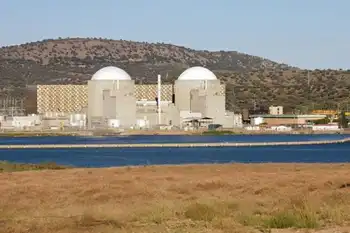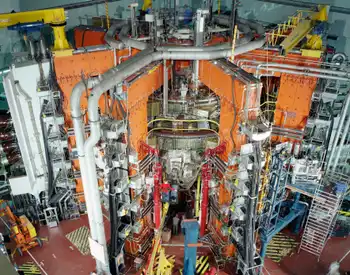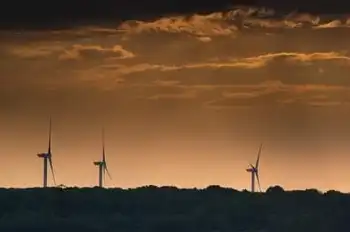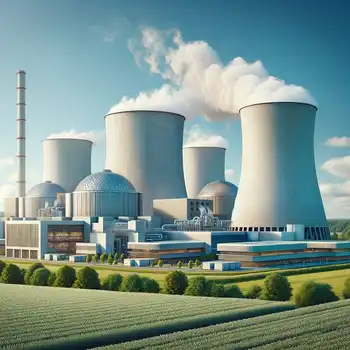Watershed year coming for PV generation
LAS VEGAS, NEVADA - Next year will be a "watershed" year for construction of utility-scale photovoltaic (PV) electric generation, predicted Peter Mostow, a partner at the Wilson, Sonsini, Goodrich & Rosati law firm.
"A lot of PV projects have an in-service date of 2012, which means they have to break ground next year. Plus, critical federal tax credits supporting PV and other renewables expire at the end of 2010. To be eligible to receive those credits, projects must begin construction by the end of 2010," he told about 100 attendees during a panel discussion at the annual Power-Gen International convention in Las Vegas.
Mostow's optimism was echoed by Matt Campbell, director of product management for SunPower Corporation, a PV panel manufacturer. "The biggest challenge facing PV is the need to bring costs down," Campbell said. "Typical costs for PV now are about $2,000 per installed megawatt, and conversion efficiencies are around 15%. Our PV panels have a conversion efficiency of 22%, and our five-year goal is to lower installed costs to $1,000 per MW."
Installation of tracking devices to concentrate the intensity of the solar resource could increase PV conversion efficiencies to 30%, he added. Conversion efficiency refers to the efficiency with which PV panels turn solar energy into electricity.
The PV industry's levelized cost to produce electricity is dropping, and it will decline further as more projects are brought online, Campbell predicted.
SunPower provided the PV arrays for the largest U.S. PV facility, Florida's 25-MW DeSoto Next Generation Solar Energy Center, which was dedicated in late October by President Barack Obama and executives from Florida Power & Light, a subsidiary of FPL Group. The DeSoto facility already is being considered for an expansion of up to 150 MW.
SunPower also has been involved in PV projects for Exelon Corporation, Xcel Energy Incorporated, and Pacific Gas & Electric, a unit of PG&E Corporation.
Industrial Info is tracking 25 utility-scale PV projects totaling 2,297 MW, with a total investment value (TIV) of about $13 billion, that are scheduled to kick-off in 2010, according to Shane Mullins, Industrial Info's Vice President of Product Development - Power Industry.
An additional 1,700 MW of utility-scale PV-generating capacity is under development in the U.S., with scheduled kick-off dates between 2011 and 2013, he added. "Development of PV-generating facilities is definitely on the rise, and we expect continued growth in the U.S. market for utility-scale PV," Mullins said in an interview.
The cost to generate electricity from PV installations is high today when compared to other renewable energy sources, said Hal LaFlash, director of emerging clean technologies for Pacific Gas & Electric, at the Power-Gen panel discussion. "However, costs for PV are falling faster than costs for electricity from concentrating solar power (CSP), and wind power costs are actually rising," he observed. LaFlash said there are proposed PV projects whose cost to produce electricity is significantly less than the reported $289 to $464 per megawatt-hour cost calculated by the California Public Utilities Commission.
LaFlash is in a good position to know. San Francisco-based PG&E is investing heavily in a variety of renewable energy resources to comply with a mandate from the state of California to have 33% of its electricity come from renewable energy by 2020, the toughest renewable portfolio standard (RPS) mandate in the U.S. "We face up to $25 million a year in fines if we don't meet California's renewable portfolio standard," LaFlash said.
PG&E owns or has under contract about 1,547 MW of PV generation, roughly 23% of its renewable energy portfolio. By contrast, CSP makes up about 38% of PG&E's renewable portfolio, while wind energy accounts for about 25% of its renewable portfolio. LaFlash said those proportions are changing on a regular basis because the utility is negotiating numerous contracts with renewable resource developers.
There was a dramatic increase in bidding activity from solar power developers — both PV and CSP — in response to RPS solicitations from the state of California in 2007 and 2008, LaFlash said. Largely because of that surge in bidding, PV and CSP are projected to account for about 35% of all electricity generated by renewable energy projects by 2015, up from less than 5% in 2005, according to the California Public Utilities Commission (CPUC). The projection covers renewable resources that California's shareholder-owned utilities own or have under contract.
"There are a lot of reasons why we are seeing such increased interest in PV," the PG&E executive told the Power-Gen panel. "PV technology is proven and commercially available. Costs are decreasing. Utilities are now eligible for federal investment tax credits. Unlike some other renewable resources, PV's generating output coincides well with our peak demand. The relatively small size of PV-generating facilities avoids the need for transmission upgrades. And PV can be rapidly deployed in modular units."
Related News

Coalition pursues extra $7.25B for DOE nuclear cleanup, job creation
WASHINGTON - A bloc of local governments and nuclear industry, labor and community groups are pressing Congress to provide a one-time multibillion-dollar boost to the U.S. Department of Energy Office of Environmental Management, the remediation-focused Savannah River Site landlord.
The organizations and officials -- including Citizens For Nuclear Technology Awareness Executive Director Jim Marra and Savannah River Site Community Reuse Organization President and CEO Rick McLeod -- sent a letter Friday to U.S. House and Senate leadership "strongly" supporting a $7.25 billion funding injection, arguing it "will help reignite the national economy," help revive small businesses and create thousands of new…




